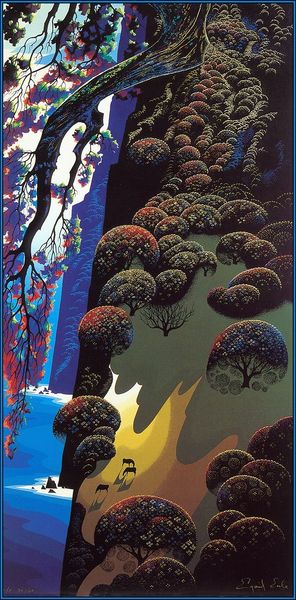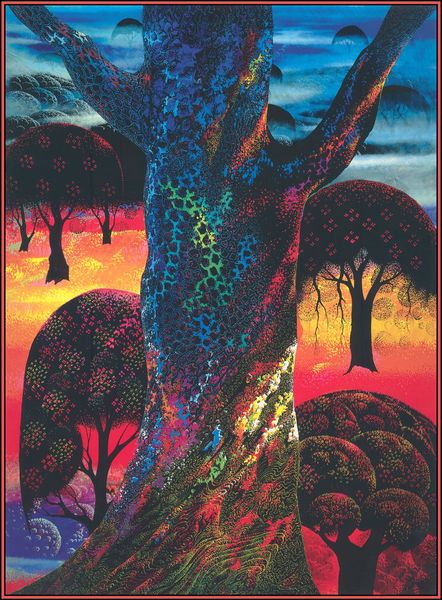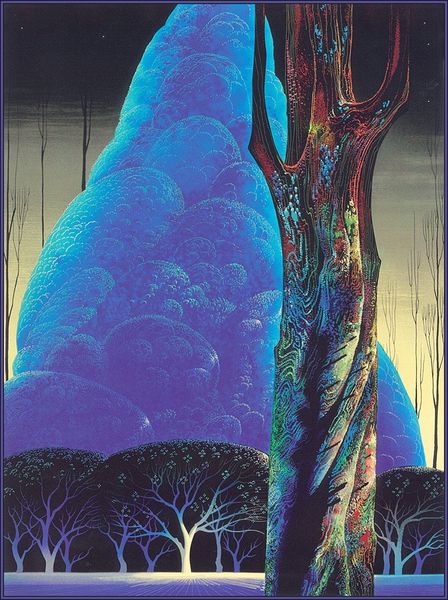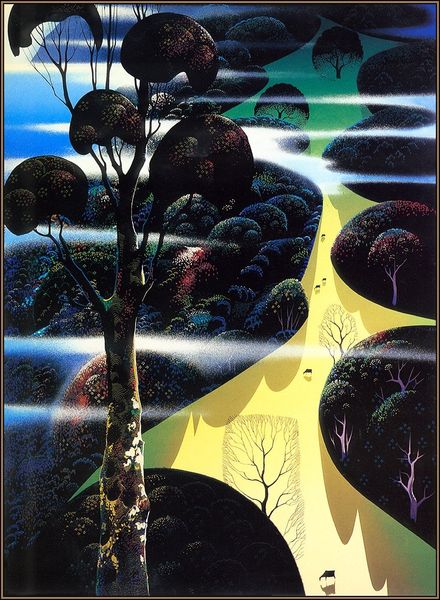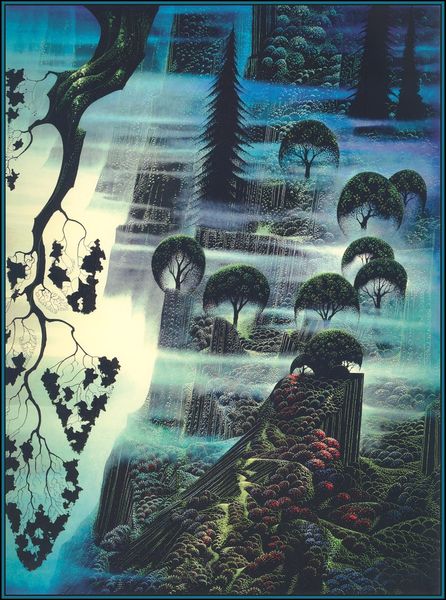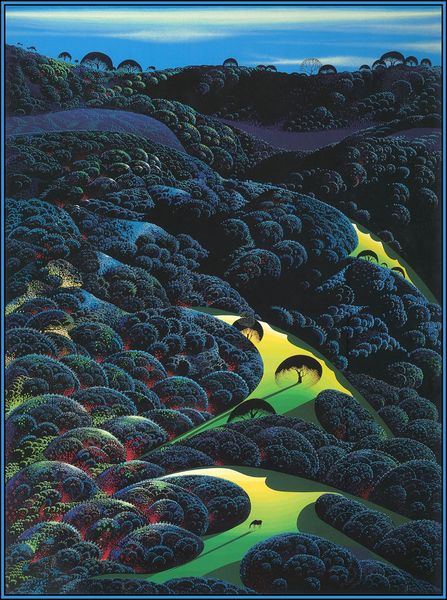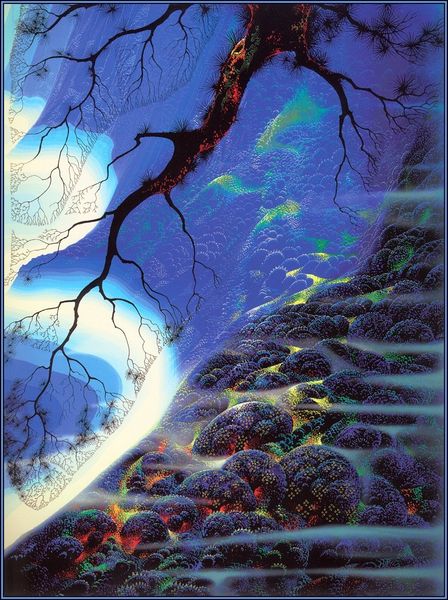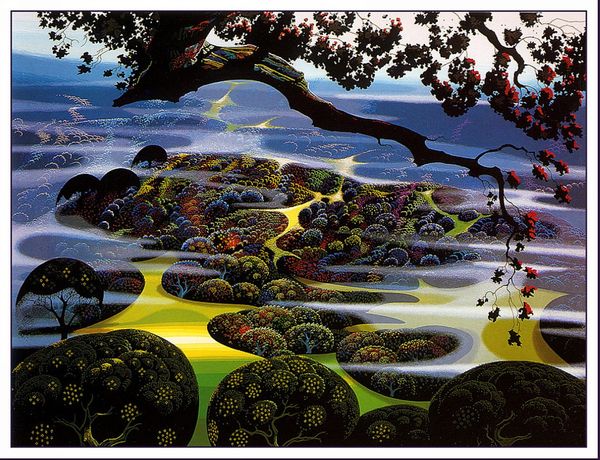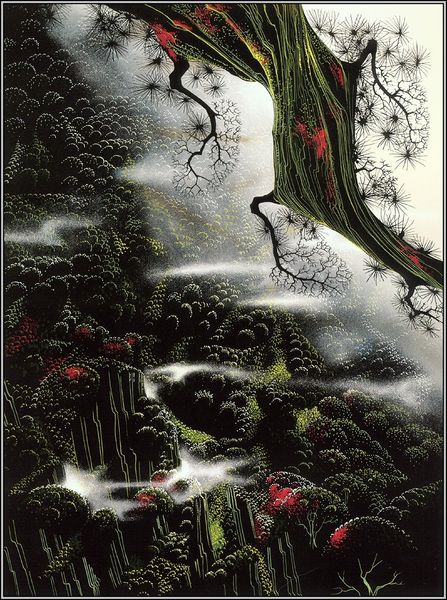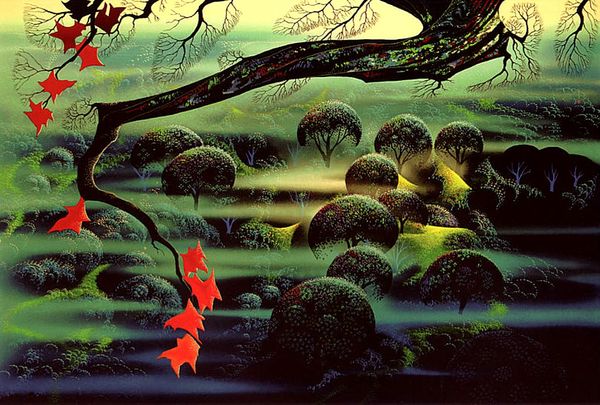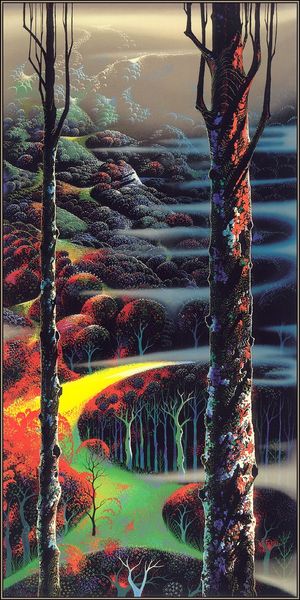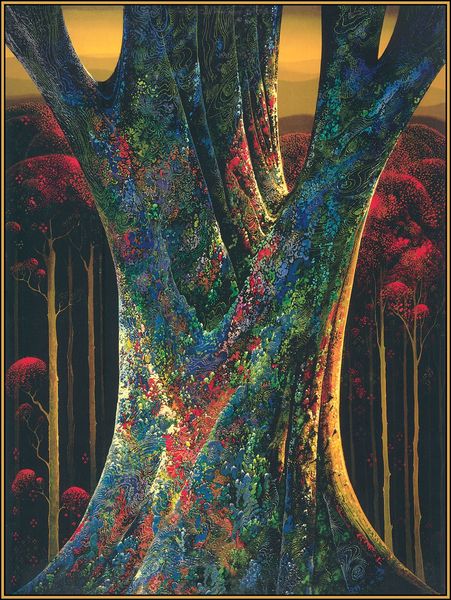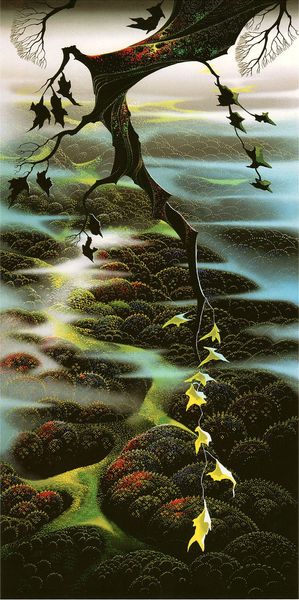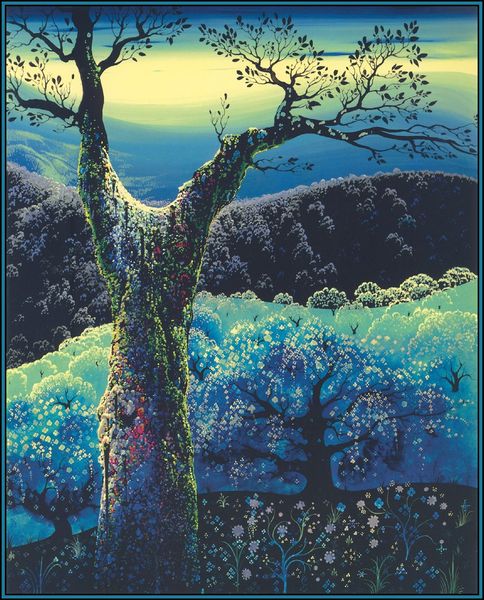
painting
#
fantasy art
#
painting
#
landscape
#
fantasy-art
#
abstraction
#
modernism
Copyright: Eyvind Earle,Fair Use
Curator: This vibrant painting, "Crimson Red and Gold," comes to us from the artistic vision of Eyvind Earle in 1995. It exemplifies his signature modernism. Editor: Oh, it has such a surreal quality, doesn’t it? It gives me a very immediate sensory feeling; that interplay of textures and colours...the strange foliage… Curator: Earle certainly developed a unique style blending abstraction and landscape, as seen in many Disney films during the mid-20th century, challenging our notions about nature. He gained recognition from his background working in animation with backgrounds such as Sleepy Hollow. He then proceeded to making fine art landscape painting. Editor: Looking at the process itself, you can see how labor-intensive Earle's method was to create this flat yet strangely textured effect through layering—how long do you suppose each of these paintings took? I'm very much struck by the way he uses gouache almost like weaving. The tree especially seems to have this laborious presence of careful details with colors of pink, purple and emerald, making each painting feel both futuristic and ancient. I'm fascinated by the materials and the marks left by his hand. Curator: That's an interesting point, about the temporality. Earle himself believed in art for everyone. In line with Modernism ideas that went against what was being sold as high brow during the 1950s and onwards in art institutions, there may be political reasons as to why some viewed modern landscapes as lacking seriousness due to it appealing towards a mass audience rather than an art critical audience. His landscape became his sign, and modern people and their connection with nature are at the forefront. Editor: So, we see landscape painting as an accessible language through this artwork for reflecting broader societal and artistic changes. It makes me appreciate the craft itself that brings the work's cultural and historical contexts to the surface, and even makes me reconsider the definition of landscape tradition as not limited to what art critique wants. Curator: Exactly. "Crimson Red and Gold," in its unique display of landscapes opens dialogues about artistry, influence and cultural history of production and aesthetics. Editor: For me it's a great point on making labor in materials, as a statement in its own right.
Comments
No comments
Be the first to comment and join the conversation on the ultimate creative platform.
